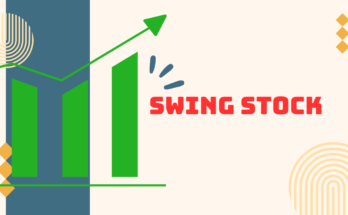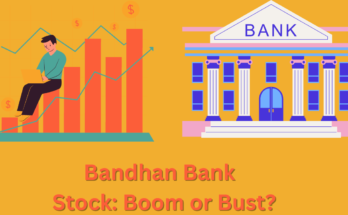What are Exchange Traded Funds (ETFs)?
What are Exchange Traded Funds (ETFs)? : Exchange Traded Funds (ETFs) are a type of investment fund that is traded on stock exchanges, similar to individual stocks. ETFs hold a portfolio of underlying assets, such as stocks, the S&P 500 bonds, or commodities, and aim to track the performance of a particular market index or benchmark.
ETFs are made up of a basket of assets, which can include stocks, bonds, commodities, or other financial instruments, and are designed to provide investors with exposure to a diversified portfolio of assets with a single investment. By investing in an ETF, investors can gain exposure to a particular market or sector without having to purchase individual stocks or other assets, while also enjoying the benefits of diversification and liquidity
ETFs are typically structured as open-end investment companies or unit investment trusts, which means that they can be bought or sold throughout the trading day on an exchange, just like individual stocks. This allows investors to take advantage of market fluctuations and adjust their portfolios quickly and easily.
ETFs ( https://www.investopedia.com/terms/e/etf.asp)also tend to have lower fees and expenses than traditional mutual funds, making them an attractive investment option for many investors. They are also tax-efficient, with most ETFs generating fewer capital gains distributions than traditional mutual funds.
There are many different types of ETFs available, including those that track broad-based indices like the S&P 500, as well as more specialized ETFs that track specific sectors, industries, or commodities.
Some ETFs also use leverage or other investment strategies to amplify returns or provide downside protection. It’s important for investors to carefully research and understand the underlying assets and investment strategy of an ETF before investing.
Types of ETFs?
There are various types of Exchange Traded Funds (ETFs) available in the market, each designed to track different types of assets or investment strategies. Here are some of the most common types of ETFs:
1. Equity ETFs: Equity ETFs are a type of Exchange Traded Fund (ETF) that invests primarily in equities, or stocks. These ETFs aim to track the performance of a specific equity index, such as the S&P 500 or the NASDAQ, or a specific sector or industry.
Equity ETFs provide investors with exposure to a diversified portfolio of stocks with a single investment. They are designed to provide the potential for long-term capital appreciation and are suitable for investors seeking growth in their portfolios.
2. Fixed-Income ETFs: Fixed-Income ETFs are a type of Exchange Traded Fund (ETF) that invests primarily in fixed-income securities, such as bonds, Treasury bills, and other debt instruments. These ETFs aim to track the performance of a specific fixed-income index or a specific sector or industry.
Fixed-income ETFs provide investors with exposure to a diversified portfolio of fixed-income securities with a single investment. They are designed to provide regular income payments and capital preservation, making them suitable for investors seeking income and stability in their portfolios. fixed-income ETFs have become a popular investment vehicle for both retail and institutional investors.
3. Commodity ETFs: These ETFs track the price movements of commodities such as gold, silver, oil, or agricultural products. Commodity ETFs provide investors with exposure to a diversified portfolio of commodities with a single investment. They are designed to provide the potential for long-term capital appreciation and are suitable for investors seeking exposure to commodity markets.
Commodity ETFs are typically structured as open-end investment companies or unit investment trusts, which means that they can be bought or sold throughout the trading day on an exchange, just like individual stocks.
4. Currency ETFs: These ETFs invest in currencies or foreign exchange, either directly or through currency futures contracts. These ETFs provide exposure to currency markets, allowing investors to speculate on exchange rate movements.
5. International ETFs: These ETFs invest in stocks or bonds of foreign companies or markets, providing investors with exposure to global markets. These ETFs aim to track the performance of a specific international index or a specific international sector or industry.
International ETFs provide investors with exposure to a diversified portfolio of international securities with a single investment. They are designed to provide the potential for long-term capital appreciation and are suitable for investors seeking exposure to international markets.
6. Style ETFs: These ETFs invest in companies with specific investment styles, such as value or growth. These ETFs aim to track the performance of a specific investment style index or a specific investment style market.
One of the advantages of style ETFs is that they provide investors with the ability to invest in a specific investment style without having to invest in individual companies. Style ETFs are also more cost-effective than actively managed mutual funds because they have lower management fees and expenses.
7. Factor ETFs: These ETFs invest in stocks that exhibit specific characteristics, such as low volatility, high dividends, or momentum. These ETFs are designed to track particular investment factors such as low volatility, high dividend yield, or quality.
8. Leveraged and Inverse ETFs: These ETFs use derivatives and other strategies to provide investors with leveraged or inverse exposure to particular markets or indices, magnifying gains or losses. Leveraged ETFs seek to provide daily returns that are a multiple of the returns of their underlying index or asset class, such as 2x or 3x the return.
For example, if the underlying index or asset class increases by 1%, a 2x leveraged ETF would seek to provide a 2% return. Conversely, if the underlying index or asset class decreases by 1%, a 2x leveraged ETF would seek to provide a -2% return. The leverage is typically achieved through the use of financial derivatives such as futures, swaps, or options.
9. ESG ETFs: These ETFs invest in companies that meet specific environmental, social, and governance (ESG) criteria, providing investors with a way to align their investments with their values.
These ETFs use derivatives to provide leveraged exposure to the underlying asset, such as stocks or bonds, or to provide inverse exposure, betting against the performance of the underlying asset.
There are many other types of ETFs available in the market, and investors should carefully research and select the ones that align with their investment goals and risk tolerance.
How to Buy ETFs?
Buying ETFs (Exchange Traded Funds) is similar to buying stocks, and there are several ways to do so:
1. Online brokerages: The most common way to buy ETFs is through an online brokerage account. Investors can open an account with a brokerage firm, deposit money, and then purchase ETFs through the broker’s trading platform.
2. Robo-advisors: Many robo-advisors offer ETF portfolios as part of their investment options. Investors can open an account with a robo-advisor and have their investments managed automatically.
3. Financial advisors: Investors can also buy ETFs through a financial advisor. Financial advisors can offer personalized investment advice and help investors choose the right ETFs to meet their investment goals.
Once an investor has chosen a brokerage account, robo-advisor, or financial advisor, the process of buying ETFs is straightforward. Here are the basic steps:
1. Decide on the type of ETFs to purchase: Investors should consider their investment goals, risk tolerance, and investment strategy when choosing the type of ETFs to purchase.
2. Choose the specific ETFs: Once investors have decided on the type of ETFs to purchase, they can research and choose specific ETFs that meet their investment criteria.
3. Place the order: Investors can place an order to buy the ETFs through their brokerage account, robo-advisor, or financial advisor.
4. Monitor the investment: After buying the ETFs, investors should monitor their investment regularly to ensure that it continues to meet their investment goals.
It is important for investors to consider their investment goals and risk tolerance when buying ETFs, and to do their research before making any investment decisions. They should also be aware of any fees associated with buying and holding ETFs, such as trading commissions and management fees.
In an ETF, what to look for?
When considering an ETF, there are several important factors to consider. Here are some of the key things to look for:
1. Objective: Make sure the ETF’s investment objective aligns with your investment goals and risk tolerance. Different ETFs have different investment strategies, such as tracking a specific index or investing in a particular sector, asset class, or region.
2. Performance: Evaluate the ETF’s historical performance to see how it has performed in various market conditions. Keep in mind that past performance is not necessarily indicative of future results.
3. Expense ratio: Consider the ETF’s expense ratio, which is the annual fee charged by the fund to cover operating expenses. Look for ETFs with low expense ratios, as higher expenses can eat into your returns over time.
4. Tracking error: ETFs are designed to track the performance of an underlying index, but there may be some deviation from the index due to factors such as trading costs and market volatility. Look for ETFs with low tracking error, which indicates that the ETF closely tracks the index it is designed to follow.
5. Liquidity: Look for ETFs that are highly liquid, meaning that they have a high trading volume and tight bid-ask spreads. This can make it easier to buy and sell shares of the ETF without experiencing significant price fluctuations.
6. Holdings: Review the ETF’s holdings to see what stocks, bonds, or other assets it holds. Look for ETFs that have a diversified portfolio of holdings that align with your investment objectives and risk tolerance.
7. Size: Consider the size of the ETF, as larger ETFs may have lower expenses and greater liquidity than smaller ETFs.
By considering these factors, you can select an ETF that aligns with your investment goals and helps you achieve your long-term financial objectives.
Examples of Popular ETFs
There are many popular ETFs (Exchange Traded Funds) available in the market. Here are some examples of popular ETFs in different categories:
1. Equity ETFs:
- SPDR S&P 500 ETF (SPY): This ETF tracks the performance of the S&P 500 index( What is The S&P 500 Index? Weighting Formula of the S&P 500? S&P 500 Index Construction, In Investing, What it’s for and Why it’s Important.), which is made up of 500 large-cap U.S. stocks.
- Invesco QQQ ETF (QQQ): This ETF tracks the performance of the Nasdaq-100 index, which includes 100 of the largest non-Vanguard Total Stock Market ETF (VTI): This ETF tracks the performance of the CRSP US Total Market Index, which includes nearly all U.S. stocks.
- financial companies listed on the Nasdaq stock exchange: There are many financial companies listed on the Nasdaq stock exchange, including:1. Amazon.com Inc. (AMZN)
2. Alphabet Inc. (GOOGL)
3. PayPal Holdings Inc. (PYPL)
4. Mastercard Incorporated (MA)
5. Visa Inc. (V)
6. American Express Company (AXP)
7. Square, Inc. (SQ)
8. Discover Financial Services (DFS)
9. Charles Schwab Corporation (SCHW)
10. Interactive Brokers Group, Inc. (IBKR)
11. Fidelity National Information Services, Inc. (FIS)
12. E*TRADE Financial Corporation (ETFC)
13. Green Dot Corporation (GDOT)
14. National Holdings Corporation (NHLD)
15. Synchrony Financial (SYF)This is not an exhaustive list, and there are many other financial companies listed on the Nasdaq exchange, including banks, insurance companies, and investment firms. - Vanguard Total Stock Market ETF (VTI): This ETF tracks the performance of the CRSP US Total Market Index, which includes nearly all U.S. stocks.
- iShares Core S&P 500 ETF (IVV): It is a popular equity ETF that seeks to track the investment results of the S&P 500 Index, which is a widely recognized benchmark of the U.S. stock market. The S&P 500 Index is composed of the 500 largest U.S. publicly traded companies, and it represents approximately 80% of the total U.S. stock market capitalization.
- Schwab U.S. Broad Market ETF (SCHB)
2. Fixed-Income ETFs:
- iShares iBoxx $ Investment Grade Corporate Bond ETF (LQD) : This ETF tracks the performance of investment-grade corporate bonds issued by U.S. companies.
- Vanguard Total Bond Market ETF (BND): Vanguard Total Bond Market ETF (BND) is a popular fixed-income ETF that tracks the performance of the Bloomberg Barclays U.S. Aggregate Float Adjusted Index. This index includes a broad range of investment-grade U.S. bonds, such as government bonds, corporate bonds, and mortgage-backed securities.
- BND is designed to provide investors with exposure to the overall U.S. bond market and seeks to provide diversified exposure to different sectors of the bond market, which can help to reduce overall portfolio risk. As of April 2023, BND holds more than 9,500 different bonds, with an average duration of 6.1 years and an average yield to maturity of 1.7%.
- iShares 7-10 Year Treasury Bond ETF (IEF): The iShares 7-10 Year Treasury Bond ETF (IEF) is a popular fixed-income ETF that tracks the investment results of an index composed of U.S. Treasury bonds with remaining maturities between 7 and 10 years. The fund seeks to provide investors with exposure to the intermediate-term segment of the U.S. Treasury market, which is considered to be less volatile than shorter-term bonds and less sensitive to interest rate changes than longer-term bonds.
- SPDR Bloomberg Barclays High Yield Bond ETF (JNK)
- iShares iBoxx $ High Yield Corporate Bond ETF (HYG)
3. Commodity ETFs:
- SPDR Gold Shares ETF (GLD)
- iShares Gold Trust ETF (IAU)
- United States Oil Fund LP (USO)
- Invesco DB Commodity Index Tracking Fund (DBC)
- iShares Silver Trust ETF (SLV)
4. Currency ETFs:
- Invesco CurrencyShares Euro Currency Trust (FXE)
- Invesco CurrencyShares Japanese Yen Trust (FXY)
- Invesco CurrencyShares British Pound Sterling Trust (FXB)
- Invesco CurrencyShares Swiss Franc Trust (FXF)
- Invesco CurrencyShares Australian Dollar Trust (FXA)
5. International ETFs:
- iShares MSCI EAFE ETF (EFA) : This ETF tracks the performance of the MSCI EAFE index, which includes stocks from developed markets in Europe, Asia, and Australia.
- Vanguard FTSE Developed Markets ETF (VEA)
- iShares MSCI Emerging Markets ETF (EEM)
- Vanguard FTSE Emerging Markets ETF (VWO)
- iShares MSCI ACWI ex U.S. ETF (ACWX)
6. Sector ETFs:
- Technology Select Sector SPDR Fund (XLK)
- Financial Select Sector SPDR Fund (XLF)
- Energy Select Sector SPDR Fund (XLE)
- Health Care Select Sector SPDR Fund (XLV)
- Consumer Discretionary Select Sector SPDR Fund (XLY)



